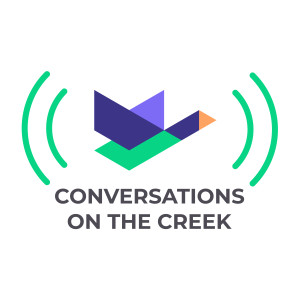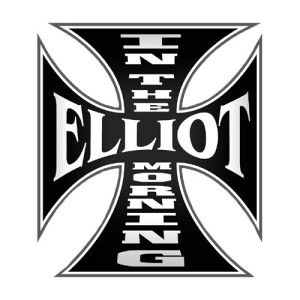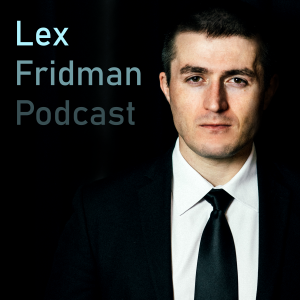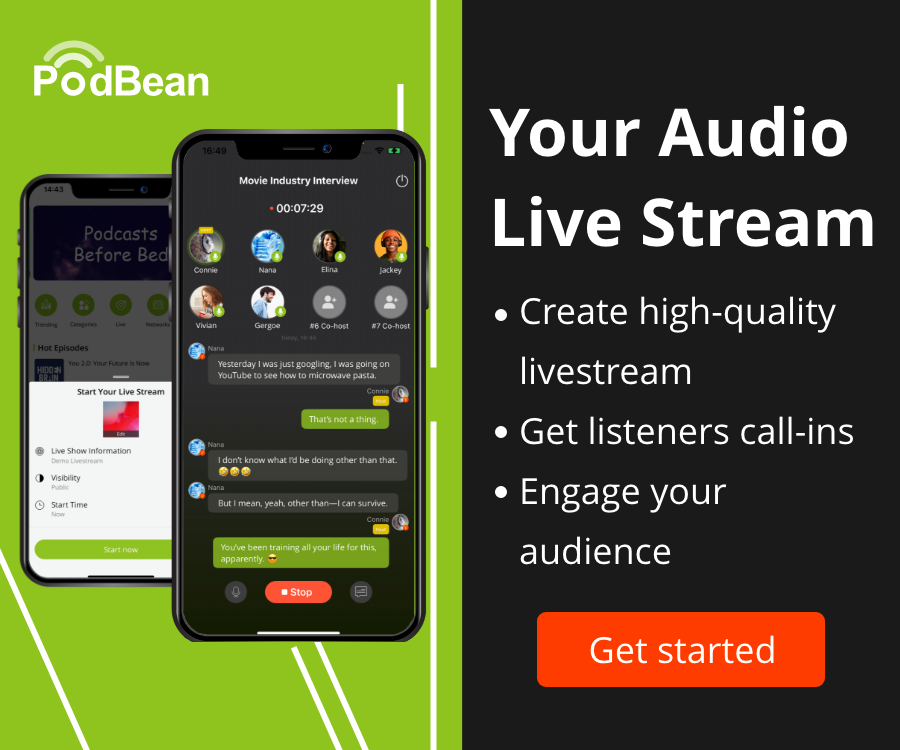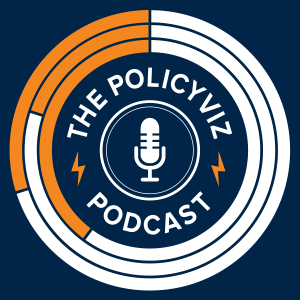

In the first episode of The PolicyViz Podcast of 2024, I speak with Sheila Pontis and Michael Babwahsingh, the authors of the new book, Information Design Unbound. The book, which contains over 400 images and input from more than 65 contributors, is designed to serve both students and professionals through exercises and activities. It specifically addresses how to teach design and information design to students without a traditional design background and explores different approaches to the subject based on students’ fields of study, as well as various team structures within the profession.
Topics Discussed- Origins of “Information Design Unbound”: Sheila and Michael discuss their drive to pen a comprehensive guide in the field of information design, recognizing the gap in educational resources for this burgeoning discipline.
- Collaborative Challenges: The duo sheds light on the difficulties they faced while integrating varied viewpoints and adhering to publishing constraints since their partnership with Bloomsbury commenced in 2016.
- Educational Resource: With over 400 images and contributions from more than 65 experts, the book is a treasure trove of knowledge, featuring exercises and activities aimed at both new learners and seasoned practitioners.
- Design Education for Non-Designers: The authors emphasize the importance of teaching design and information design to students without a formal background in design, tailoring approaches based on the students’ areas of study.
- Professional Team Dynamics: An exploration into the various team structures within the field of information design and how they collaborate to address complex issues.
- Evolution of Design Thinking: A shift from creating traditional design artifacts to solving complex systems and wicked problems is discussed, marking the advancement in design methodologies.
- Cultural Sensitivity in Design: The conversation highlights the crucial role of context, audience, and cultural differences when employing icons and other design elements, acknowledging that design solutions are not universally applicable.
Information Design Unbound: Key Concepts and Skills for Making Sense in a Changing World
by Sheila Pontis and Michael Babwahsingh
Making Sense of Field Research: A Practical Guide for Information Designers
by Sheila Pontis
Communicating Knowledge Visually. Will Burtin’s Scientific Approach to Information Design
by R. Roger Remington & Sheila Pontis
MapCI Cards (Mapping Complex Information Cards)
Sheila Pontis’ website
Sheila Pontis, PhD is an information designer, researcher, educator, and partner at Sense Information Design. With more than 20 years in higher education, her courses and research blend information design, cognitive science, and field research with creative thinking to help people reconnect with their imagination, envision new realities, and feel empowered to lead change — in their own lives and in society.
Before joining Northeastern University, she taught at Massachusetts Institute of Technology, Princeton University, Parsons School of Design, Rutgers University, and University College London, among other universities. Her research has been published in numerous peer-reviewed journals and presented at multiple conferences.
She is the author of Making Sense of Field Research: A Practical Guide for Information Designers (Routledge, 2018) and coauthor of Communicating Knowledge Visually: Will Burtin’s Scientific Approach to Information Design with R. Roger Remington (RIT Press, 2021). Sheila has a degree in Graphic Design from the University of Buenos Aires, Postgraduate and MPhil degrees from the University of Barcelona, and a PhD from the University of the Arts London.
Michael Babwahsingh is an information designer and partner at Sense Information Design. His work focuses on information design in the broadest sense: helping people make sense of their world in order to solve problems, uncover opportunities, and achieve their goals. His nearly 25 years of experience span strategic design and innovation, visual facilitation, branding, and communication design for a variety of clients in health care, life sciences, finance, technology, and social good.
He has taught design thinking at NYU Wagner Graduate School of Public Service and information visualization at Parsons School of Design.
Michael received a BA in Art and Graphic Design from Moravian College.
Related EpisodesEpisode #245: Making with Data
Episode #235: Jen Christiansen
Episode #233: Ellie Balk
Whisper Transcribe is a transcription game-changer! It turns a three-hour video into accurate, well-punctuated text in just 8 minutes, saving hours of work. Not only does it transcribe audio and video, but the underlying AI model will generate sample summaries, social media content, bullet points, and more. Check it out!
Different Ways to Listen to the Show!With more than 250 guests and 10 seasons of episodes, the PolicyViz Podcast is one of the longest-running data visualization podcasts around. You can support the show by downloading and listening, following the work of my guests, and sharing the show with your networks. If you’re interested in financially supporting the show, you can sign up for my Patreon platform, make a one-time payment via PayPal, or shop one of the show’s sponsors.
00:00 – 00:17
Welcome back to the PolicyViz Podcast. I’m your host, Jon Schwabish. Happy New Year,
00:17 – 00:22
everybody. I hope you had a lovely holiday season. Maybe get a little rest and relaxation
00:22 – 00:29
in there. I basically spent two weeks at home working very little, spending a bunch of time
00:29 – 00:34
with my kids and my wife, saw a couple of Washington Capitals games, got a behind the
00:34 – 00:39
scenes tour of Nationals Park here in DC. Just a very nice, relaxing time. Read four
00:39 – 00:45
whole books. That was really nice. Just sitting down, reading, drinking some tea, having some
00:45 – 00:51
cocktails in the evening. A very nice, relaxing holiday. And I hope you were similarly having
00:51 – 00:57
a restful holiday. But now we’re back in 2024, and I’ve got a whole great new lineup of guests
00:57 – 01:02
for you coming up over the next several months. And we’re going to kick off the year with the
01:02 – 01:07
authors of the new book, Information Design Unbound. If you’re not watching this on YouTube,
01:07 – 01:11
you can’t see that I’m holding up the book. Information Design Unbound, Key Concepts and
01:11 – 01:18
Skills for Making Sense in a Changing World by Sheila Pontes and Michael Babwahsingh. Two folks
01:18 – 01:24
I have known for quite a long time. Really admired their work, especially Sheila’s previous book,
01:24 – 01:29
where it’s one of the few books that focuses on qualitative data visualization. So I really like
01:29 – 01:35
that. But this book, they focus on how we as designers and information designers, so might be
01:35 – 01:41
data visualization specialists, you might be a data science expert, how we can do a better job
01:41 – 01:47
of communicating our data. But the focus is more on the process. And I think over the last few
01:47 – 01:53
months of podcast interviews, you’ve seen more discussion on this show about the process of
01:53 – 01:59
creating and producing effective data visualizations. I talked to Vidya Settler and Bridget Cogley a few
01:59 – 02:03
months ago about their book, Functional Aesthetics. I talked to Jen Christensen about her book,
02:03 – 02:08
Designing Science Graphics. Both of those books, including this book by Sheila and Michael,
02:08 – 02:14
are focusing on this process of creating effective visualizations. So if you are in the field of
02:14 – 02:19
information design, data visualization, data science, what you’re going to learn from our
02:19 – 02:26
conversation here is how you can build an effective team and work your process through that
02:26 – 02:30
team to create more effective visualizations. So we talk about different models for setting up that
02:30 – 02:35
team and who might be a part of that team. We also talk about different cultures and different
02:35 – 02:40
expectations that different cultures have about your visualizations and how you should think about
02:40 – 02:45
that. And we also talk about research and how if you are a designer, maybe you don’t have a background
02:45 – 02:49
in research, what you need to be thinking about when it comes to research. And similarly,
02:49 – 02:54
if you’re a researcher, what you need to be aware of when it comes to the communication,
02:54 – 02:58
when it comes to the design side of your communication efforts. So it’s a really
02:58 – 03:03
interesting discussion. I really do highly recommend the book. It’s really just a lovely
03:03 – 03:07
book. It’s nice and big and great images and great writing. And it’s got all these great
03:07 – 03:12
examples and worksheets in it that I think will be beneficial to those of you who are working in
03:12 – 03:18
this area. So again, Happy New Year. Welcome back to the PolicyViz Podcast. I hope you enjoy
03:18 – 03:25
this kickoff episodes in 2024. My conversation with Sheila Pontis and Michael Babwahsingh starts right now.
03:28 – 03:33
Michael, Sheila, hello. Good to see you. Kind of in person, virtually as close as we can get
03:33 – 03:38
in person these days. Great to see you. Thanks for joining me on the show. Thank you for inviting us.
03:38 – 03:43
Thanks, John. I’m very excited to have you. For those who are watching the video, I’ve got the
03:43 – 03:50
beautiful Information Design Unbound book right here. It’s lovely. I mean, it’s lovely in a
03:50 – 03:56
variety of ways. I mean, aside from just content, but just like the art is lovely. And we’re going
03:56 – 04:01
to get into all the good stuff about this book. Well, not all of it because then people need to
04:01 – 04:05
read it. And this podcast episode would be like 700 hours long. So we won’t bother with that.
04:06 – 04:10
So I thought we would start with just basic introductions, who you are, where you’re coming
04:10 – 04:14
from, and then we can dive into the content here. So maybe Sheila, we’ll start with you.
04:15 – 04:21
Perfect. Thank you, John. So yes, my name is Sheila Pontis. I’ve been an information designer,
04:21 – 04:26
researcher, and educator for probably more than 20 years now. I have a lot of experience in
04:26 – 04:32
higher education. I live in four different countries, taught in different countries,
04:32 – 04:36
designed in four different countries. So I have kind of a very global view of the field.
04:38 – 04:44
I recently joined Northeastern University as the Director of the Information Design and Data
04:44 – 04:52
Visualization Graduate Programs. So I started in January. I have also wrote other books about
04:52 – 04:57
information design, research. Yeah, that’s me. Yeah, for sure. And I should say before we get
04:57 – 05:02
to Michael, your field research book is one of the ones that I share with people,
05:02 – 05:08
Qualitative Data Vis, just doing research, just a really nice, great book to get out there and do
05:08 – 05:15
research. Okay. Michael. So my name is Michael Babwahsingh. I’m an information designer. I’ve
05:15 – 05:24
been working for close to 25 years on a range of projects ranging from strategy to branding to
05:25 – 05:30
communication design and just straight ahead information design. I’m a partner at Sense
05:30 – 05:36
Information Design with Sheila, and that’s been the focus of my attention for the past 10 years.
05:38 – 05:44
And yeah, I try to be active in the community and follow what’s going on as much as I can and
05:46 – 05:50
hope to make more contributions. We’re also, Sheila and I, should I, we are co-organizers
05:50 – 05:57
of the Information Design NYC Meetup, which has been dormant for a while, but we do try to
05:58 – 06:04
use that to engage with the community in the area and just keep the word alive,
06:04 – 06:10
keep activity going around information design. Right. So is that how you two met? I’m curious
06:10 – 06:16
about how you two got together to co-author this particular book. How far in time you want to go?
06:17 – 06:26
As far as you need. Yeah. I mean, we got together a while before the book came into the equation.
06:26 – 06:30
So yeah. Well, so what were the conversations like to say,
06:31 – 06:36
this book is needed and we are the right people to write it and we should write it together?
06:37 – 06:42
So I can start if you want, Mike, and then you can change. So having been in education for a
06:42 – 06:48
long time and having taught information design to different groups of students, I always found
06:49 – 06:56
the need to have one book that contains all the key concepts to information design. I always
06:56 – 07:01
find myself like grabbing a chapter from here, an article from there, a link, a video. I couldn’t
07:01 – 07:08
find one book that had it all, at least from an introduction point of view. I couldn’t find
07:08 – 07:15
exercises that were at different levels or complexities. So when we came across this
07:15 – 07:21
project to me, that was an opportunity to say, it would be cool to have a textbook with everything
07:21 – 07:26
there, at least foundationally speaking, and then you can build on, but at least you have
07:26 – 07:33
something that contains all the key concepts. Yeah. I think just to build on that, I think
07:33 – 07:38
we both had like different experiences and different angles that sort of converge. So
07:38 – 07:44
Sheila’s coming more from education and academia, and I’m coming squarely from practice. And from
07:44 – 07:51
my experience, what I was seeing was that we weren’t showing the bigger picture of information
07:51 – 07:57
design. There’s a lot of confusion. There’s a lot of interchanging of words and concepts in
07:57 – 08:02
information design. Like some people say it’s only data viz. Other people say it’s infographics.
08:02 – 08:07
There’s people doing wayfinding, document design, technical communication. There’s lots of different
08:07 – 08:12
people in that space, but we’re not talking about them holistically. We’re not speaking about the
08:12 – 08:17
field as a whole, and we’re also not thinking about the practitioner. What does it mean to
08:17 – 08:22
be an information designer? What are the skills? What is the knowledge? What’s the mindset you
08:22 – 08:29
need? So all of this foundational stuff, plus the world is changing. So infographics and data viz
08:29 – 08:33
are not enough. So I’ve been seeing that in my own work. I’ve been pushed into more strategic
08:33 – 08:38
projects where a client just needs help figuring something out, and I have to bring that sensibility
08:38 – 08:44
into that problem space and start mapping things out, working with them in a very rough form,
08:44 – 08:50
but using the same approach as I would to an information design project. So how do we start
08:50 – 08:58
talking about this, and how do we start preparing students and young information designers to think
08:58 – 09:04
this way and to start approaching the field from the big picture and not from the atomic level of
09:04 – 09:09
how do you make a chart or a graph, or do you truncate the y-axis? I mean,
09:10 – 09:15
we got to really take a step back. So for me, that was an important thing. How do we
09:15 – 09:22
tackle this big beast, and how do we make sense of our own field for everyone to understand in one
09:22 – 09:28
book? And an interesting convergence of forces here is that we’ve always been thinking about
09:28 – 09:32
this. Shiel and I have always been kind of debating what the hell’s going on in the world, and why
09:32 – 09:40
don’t people understand information design? But on Twitter, I saw a tweet by an editor at Bloomsbury,
09:40 – 09:47
and it was almost like too good to pass up. She tweeted that they were looking for someone to
09:47 – 09:52
write a textbook in information design. So that instantly was the catalyst, like, okay, I got to
09:52 – 10:00
jump on this. So we basically contacted her, and we filled out the forms and kind of a proposal.
10:00 – 10:06
And from there, we signed the contract, and we dove head on into the book development.
10:07 – 10:13
So how long, just out of curiosity, how long did it take you from that point to the end? Because
10:13 – 10:19
there’s a lot going, like, I don’t think, people who haven’t published books before don’t really
10:19 – 10:25
know how much goes into this, particularly a book like this that is so heavy on images and
10:25 – 10:30
illustrations, and there’s cutouts, and there’s worksheets, and there’s exercises, which I want
10:30 – 10:36
to come to in a second. But how long did that go, and what was, we don’t need to go into all of it,
10:36 – 10:41
but what was that process like? Did you lay it all out and say, here’s the package, go for it,
10:41 – 10:49
or what was that process like? Let’s say that, so the first contact with the publisher was in 2016.
10:49 – 10:54
For you to have a reference, I haven’t finished my first book yet. I was just about to finish that.
10:54 – 11:03
Okay. So, and we finished this Information is Unbound in 2023, so it was a substantial amount
11:03 – 11:09
of time. Yeah. But I think to us, now, in retrospect, what was interesting was how much
11:09 – 11:16
we changed our point of view on the field, on teaching, pedagogically speaking, on the exercises,
11:16 – 11:23
on the types of the students we wanted to teach information design from 2016 to now. Yeah. And I
11:23 – 11:31
think probably what took us the longest was to reconcile both views and to work within the
11:31 – 11:39
constraints of the book, because you have a limited space, page count, so there are many
11:39 – 11:45
things, but also something we talked a lot about is I don’t want to write a book on information
11:45 – 11:50
design equivalent of the ones that are out there. I don’t want to repeat the same story, because you
11:50 – 11:57
can buy many books and you have the same. So, kind of defining our point of view and kind of, as Mike
11:57 – 12:04
was saying, telling this more expansive approach of the practice that we saw emerging and emerging,
12:04 – 12:10
and then COVID hit and many things became much more evident, like the role of information design
12:10 – 12:15
was not only focused on infographics anymore, it started to have a much more expansive role. So, I
12:15 – 12:22
think it was a conversion of different things. We can keep talking the last 45 minutes, but
12:23 – 12:30
as you said, the book has more than 400 images, more than 65 contributors, that took a year and
12:30 – 12:40
a half of chasing alone. So, it’s a long process. Yeah. So, I want to ask about this researcher
12:40 – 12:45
teaching side versus the practitioner side, because one of the things that I really appreciate
12:45 – 12:51
about the book, and I would say other newer books that have been out in the last year or so,
12:52 – 12:58
is the inclusion of exercises and activities. And it seems to me that the exercises,
12:58 – 13:05
and they’re for every part, not necessarily every chapter of the book, but
13:05 – 13:12
they are, I sort of read them as really threading that needle, where you could easily envision
13:12 – 13:17
students having to do these exercises as part of their classwork, but also, to Michael, to your
13:17 – 13:22
point, when you’re working with a client, using them in that way. So, I want to maybe start with
13:22 – 13:26
you, Michael, like I don’t really have a specific, I guess if I had a specific question would be,
13:26 – 13:30
have you used these sorts of things in practice? Is that where they came from? Do you use them now
13:30 – 13:37
in practice? So, and maybe, you know, how did you both come together to sort of develop the exercise
13:38 – 13:43
sheets as they were in the book? Yeah, I think my response will be brief, because I think this is
13:44 – 13:51
Sheila’s, this was one of Sheila’s focuses, was to actually really fine-tune those exercises to make
13:51 – 13:58
them as effective as possible, to reflect the concepts, and to really get students and people
13:58 – 14:04
kind of engaged in thinking through what we were talking about in each chapter. But for my
14:04 – 14:12
own experience, I mean, it kind of blends a little bit more into the teaching side, because sometimes
14:12 – 14:18
in workshops, you have to, like when you’re training, when you’re teaching professionals,
14:18 – 14:22
it’s a bit different from teaching students, because there’s a lot of ingrained habits,
14:22 – 14:27
there’s a lot of resistance to things. So, the best example I can give is with visual thinking.
14:27 – 14:34
So, people don’t often, I mean, it is generally loosely associated, like people will make the
14:34 – 14:38
connection with visual thinking and information design, but it’s not explicit. There’s no book,
14:38 – 14:44
like, you know, that actually tells you this is a foundational skill, but when you bring it into
14:44 – 14:50
professional, the professional environment, like, I’m usually the one who has to get up in front of
14:50 – 14:54
a client meeting and write at the whiteboard or draw at the whiteboard. And I always try to
14:55 – 14:58
encourage people to come up and use the marker and just start drawing, because
14:59 – 15:04
that’s, to me, the most effective way to uncover information, to synthesize information,
15:04 – 15:10
to identify gaps. So, when you start teaching that to professionals, you have to fine-tune,
15:10 – 15:15
okay, what are the most basic, basic things they need to know, and how do you make people comfortable
15:15 – 15:20
just doing something unfamiliar and getting really in that groove of, like, okay, this is another
15:20 – 15:26
thing I can use to think about my problems. It’s not just words anymore. I can draw on my notebook,
15:26 – 15:31
I can draw on a whiteboard and a flip chart. It’s just another way of working. So, I think that,
15:31 – 15:36
to me, was the biggest thing. Like, how do you just start easing people into a different way
15:36 – 15:42
of working and build that comfort and confidence so that way they can do the more complicated
15:42 – 15:48
stuff? So, in the visual thinking chapter, it builds from why do you need it, what are the tools,
15:48 – 15:53
what are the basic elements, and then how do you start thinking diagrammatically? And then the
15:53 – 15:58
exercises go into just, like, again, how do you build a toolkit, how do you put the things together,
15:58 – 16:02
and how do you start mapping and visualizing? So, I think that, to me, is my kind of big
16:03 – 16:08
kind of realization is, like, you really need to break it down and take it a step back so that
16:08 – 16:13
people feel confident. Once you build the confidence, then it becomes easier to layer
16:13 – 16:19
on the more advanced things for professionals, for, like, people who’d never do it, who’ve never
16:19 – 16:24
done it before. Right. So, I want to come back to that in a moment, the confidence piece, because
16:25 – 16:34
I think a lot of this is within groups and within teams how people feel their role fits in or
16:34 – 16:39
doesn’t, because there’s a big chapter on that right at the beginning, which I found really
16:39 – 16:42
fascinating. So, I want to come back to that in a second. But, Sheila, I wanted to give you a chance
16:42 – 16:49
to talk about these exercises and how maybe you develop them and, I would guess, continue to use
16:49 – 16:55
them in classes and workshops and that sort of thing. So, I would say probably for the last 10
16:55 – 17:01
years, I have found myself teaching design and information design to not necessarily students
17:01 – 17:05
with a design background or art and design background. Probably, if you only teach, for
17:05 – 17:11
example, Parsons School, most of the students know primary colors. Most of the students are familiar
17:11 – 17:17
with design concepts. But when you teach, I don’t know, more art education, I taught at Princeton
17:17 – 17:23
for six years, the students don’t have a design background at all. So, that made me think that
17:23 – 17:29
maybe readers of this book are not going to be designers necessarily, or it’s just
17:29 – 17:35
students with a design background. So, how can we think about the students that are not
17:35 – 17:41
software dependent, that are not only focusing on the visual side of the practice, but more
17:41 – 17:48
on helping the students develop the mindset and start developing visual awareness of things,
17:48 – 17:54
understanding how they work, understanding their own creative process, developing concepts,
17:54 – 18:01
all the more kind of invisible steps that I usually rush through. The book emphasizes a lot,
18:01 – 18:08
that’s why most of the exercises are analytical, self-reflective, and a part of them are
18:09 – 18:15
like team related, but a few are very individual, in the sense like I need to understand what I’m
18:15 – 18:21
feeling comfortable with first, and then I’m going to be able to engage in more complex type of
18:21 – 18:27
projects. So, it’s kind of also progression on that. It is interesting how students in different fields
18:27 – 18:32
approach information design differently, and I mean that’s not surprising, each field has its own
18:32 – 18:38
intricacies and nuances and jargon and that sort of thing. So, let’s maybe pull these together a
18:38 – 18:43
little bit. So, in the first part of the book, so I’m looking at, for those of you who are following
18:43 – 18:51
along at home, I’m looking at pages 46 and 47. You have these kind of four models of, for lack of a
18:51 – 18:55
better term, teams sort of built out. So, you’ve got the communications team, the experiences team,
18:55 – 19:00
organizations and systems, and there’s lots of different people who are all involved in
19:00 – 19:05
information design, as I think any of us who’s ever done any sort of project with any organization
19:05 – 19:11
knows. And I thought maybe you could just talk a little bit about these different types of team
19:11 – 19:16
structures, and maybe we could do the similar sort of back and forth, because I feel like,
19:17 – 19:20
I mean, you certainly both can, but I think, Michael, maybe you could talk a bit about working
19:20 – 19:25
with clients in these different models, and then Sheila, maybe talk a little bit about how students
19:25 – 19:31
maybe see themselves fitting in these different places, because there are so many different roles
19:31 – 19:36
and they overlap and the lines are sort of fuzzy a little bit. So, maybe we start with the
19:37 – 19:43
organizations in the real world, and then we could turn to students. So, do you want to start a
19:43 – 19:50
little bit? Yeah, sure. So, I think, yeah, because I know in podcast form, the visuals are lost. So,
19:50 – 19:55
I’ll try to explain at least sort of the first piece of this story is really the challenge scale.
19:56 – 20:04
So, we are actually building on previous models of the design orders of the levels of design.
20:04 – 20:12
So, Richard Buchanan, who is very well known in design academia, is like, he’s been very
20:12 – 20:16
influential in establishing a lot of this thinking, but he introduced this idea of four
20:16 – 20:23
orders of design, where you have four levels from communications and artifacts, the most
20:23 – 20:30
concrete and tactical thing at the base, growing into products and services, experiences,
20:30 – 20:37
all the way out into systems. So, the whole idea is that design in general is growing,
20:37 – 20:41
and this is now not news. A lot of people are starting to come on board with this,
20:41 – 20:49
where design was once only artifacts and visual products, things that you could make two-dimensional,
20:49 – 20:54
three-dimensional, but then over time, through forces, economic, business, whatever forces,
20:54 – 21:01
we started getting into services and experiences, where now it’s not just a thing I hold, now it’s
21:01 – 21:07
a place I visit. It’s navigating physical and digital spaces. It’s, you know, service design
21:07 – 21:12
kind of enters into this space where it’s like, what are all the different things that I interact
21:12 – 21:17
with that make this entire experience or service journey possible? And then we’re going outward
21:17 – 21:23
even more into organizations where you have multiple dynamics and organizations. Like,
21:23 – 21:30
how do you think about internal culture, strategy, vision, you know, operations,
21:31 – 21:36
all the way down to, you know, supply chain, logistics, like the entire stack of a company.
21:36 – 21:40
Like, all those things are multiple systems working within a giant system. So, how do we
21:40 – 21:45
start to think about designing within that organizational design? And then the biggest,
21:45 – 21:51
so far, level is systems. So, that’s basically all the things we call wicked problems today.
21:51 – 21:58
So, climate change, you know, health care. So, you have, like, things like COVID, massive problem
21:58 – 22:04
that, you know, we’re still dealing with. You know, education, you know, unemployment,
22:04 – 22:10
isolation of the elderly, you know, loneliness, things that are multi-, like, entangled and
22:10 – 22:15
kind of enmeshed with other things. That is now coming more to the foreground. A lot of people
22:15 – 22:21
are starting to get really concerned and engaging in more climate-related things,
22:21 – 22:27
environmental things, sustainability things. So, the remit of design has grown, but we’re still
22:27 – 22:32
trying to reconcile what are designers doing at each level? How are we supposed to fit in? So,
22:33 – 22:37
winding back to information design, we’re not the saviors. We’re not claiming that
22:37 – 22:42
we’re going to fix everything at each level, but we do have a role to play in helping people
22:42 – 22:49
make sense of things that are unfamiliar or complex. So, from the tiniest icons all the way
22:49 – 22:58
to the most complex system maps, we have, I think, a considerable amount we can contribute
22:58 – 23:04
to bringing structure, bringing order, finding patterns, finding a hidden logic, as David Gibson
23:04 – 23:10
of 212 says. Like, we have to bring that sensibility and those capabilities into the
23:10 – 23:16
mix in order to align different perspectives, whether it’s people working on an icon set or,
23:17 – 23:21
you know, a community-, like, a presentation even, you know, that’s going to be for senior
23:21 – 23:26
leadership. Like, any one of those scenarios, you need to bring that awareness of, like,
23:27 – 23:33
how do people perceive information? What are the cultural dimensions? How do we even organize our
23:33 – 23:38
research, make sense of it? All of the skills that an information designer possesses can cross
23:38 – 23:42
all of those different levels. It’s just you need to modulate what are the specialized skills
23:42 – 23:48
in each one in order to do the work effectively. So, I think when we get down to the models of each
23:48 – 23:53
different type of engagement, we still have this same basic structure. So, you’re always going to
23:53 – 23:58
have the designer and the design team. You’re going to have some type of client and the client
23:58 – 24:05
team, but you’re also going to have this audience, people who are involved in some way, who are the
24:05 – 24:10
intended recipients or audience, or the people who are affected by the intervention to whatever
24:10 – 24:16
you’re doing. So, from the simplest level, we’ve got an audience who’s using a presentation or
24:16 – 24:24
looking at an interactive visualization or data viz on a website, and a stakeholder who might be
24:24 – 24:30
providing the platform in which that’s viewed, or someone else who’s related to that. And that
24:30 – 24:33
same model grows into experiences where you still have the designer, the client,
24:34 – 24:40
someone who’s trying to navigate a website or physical space, and a stakeholder who is somehow
24:40 – 24:44
involved in that. But then when you get into organizations and systems, that’s when you have
24:44 – 24:49
many different stakeholders, many different people in the mix, like different stakeholders
24:49 – 24:55
at an organization, from senior leadership, middle managers, all the way down to frontline workers,
24:55 – 25:00
they may be engaged at different places and points in time within an organizational
25:00 – 25:05
transformation initiative or change initiative. And then at systems level, you have got communities,
25:05 – 25:12
you’ve got nonprofits, you’ve got all different players, government players, all mixing in
25:12 – 25:16
to make sense of a situation. So, it’s a lot, and I could keep rambling, but I think
25:17 – 25:23
having those pictures, at least setting the stage, we hope it helps information designers see like,
25:23 – 25:29
what is the landscape? Who do I need to account for? And then how do I start to think about my
25:29 – 25:35
role? How does it change from one scenario to the other? Yeah, and the other thing,
25:35 – 25:39
and you alluded to this, and I feel like maybe people don’t quite always see this
25:40 – 25:45
when they’re in school, and we’ll come to that piece in a second, but it’s not just external,
25:45 – 25:48
right? It’s not always just external communication. There’s a lot of internal
25:48 – 25:53
communication that needs to happen so that when you are building that structure of your
25:53 – 25:58
organization, that information designers can have a role in helping that process take place
25:58 – 26:04
inside the organization. It doesn’t always have to be out on the website for external viewers can
26:04 – 26:12
have that internal piece. So, Sheila, when you work with your students, or even clients, I guess,
26:12 – 26:17
how do you get them thinking about the broader team rather than just like, I do this thing,
26:17 – 26:23
I do illustrations, and that’s all I do? So, we’re actually happy that you picked this spread
26:23 – 26:31
because we put a lot of work to try to convey the message, and actually pages 46 and 47
26:31 – 26:37
are featuring the blueprint that we are introducing on page 21, which is the blueprint
26:37 – 26:43
and information design project, and I think our goal was to show how the same elements adapt
26:44 – 26:50
as the complexity of a project increases, and how there are many more players and
26:50 – 26:57
interactions become much more complex between these players. So, the way we introduce this
26:57 – 27:04
in education is, first of all, breaking with the idea of the solo designer, that the designer grabs
27:04 – 27:09
the brief from the client, goes into the shower, is hit by an idea, and comes up with an amazing
27:09 – 27:16
solution. So, that kind of a linear model that at least I was taught by more than 20 years ago
27:16 – 27:23
in school is no longer valid, and it doesn’t really represent the current role that information
27:23 – 27:30
designers, and also designers in general, have. So, this is a way of showing the students, okay, you
27:30 – 27:35
are the designer, you’re going to be interacting with all these different players, and the more
27:35 – 27:41
complex the challenge you’re going to be involved in, the more players you’re going to be interacting
27:41 – 27:46
with, and as you mentioned, we talk in the book about when you’re working in really complex
27:46 – 27:53
challenges, organizations, or systems, you are focusing on developing internal sense-making,
27:53 – 27:58
in the sense it’s like achieving an internal understanding within the group, rather than
27:58 – 28:04
creating external communication for someone else, which is related to what you were saying. So,
28:05 – 28:10
helping the students understand the difference between designing something for someone else
28:10 – 28:16
to understand, versus first achieving internal alignment and understanding, in order to decide
28:16 – 28:24
what’s the best way forward. They’re kind of different positions to be in, but having a clear
28:24 – 28:30
distinction between these two roles is important for the students, which don’t even think
28:30 – 28:35
that holistically. Yeah, let me ask, so you said when you were, you know, started out like 20 years
28:35 – 28:43
ago, and it was this linear model, do you think that linear model was correct even then? I mean,
28:43 – 28:48
I think it probably is still correct if you have a very small design studio, and you only focus on
28:48 – 28:56
designing very framed communication artifacts, like an infographic or a report. It does still
28:56 – 29:02
work, I’m not destroying it, but I think it doesn’t represent the full variety of information
29:02 – 29:08
design challenges. That’s why I think it’s better to teach something more expansive, because if it
29:08 – 29:14
is a very simple project, okay, it becomes a much less complex interaction with your client, but
29:14 – 29:21
if the students only see the linear model, they, how do I work when I have teams of clients, or
29:21 – 29:27
when I have many different audiences? Right, yeah. I don’t think back then there was so much
29:28 – 29:33
deep thought about the process, to be honest. Right, yeah, for sure. The science of organizations
29:33 – 29:40
has changed a lot over the last couple decades, for sure. So there is a chapter in the book
29:40 – 29:44
on research, and as a researcher, I kind of went into this chapter with a little like, whoa, whoa,
29:44 – 29:49
whoa, whoa, whoa, what are we going to be trying to teach people in, you know, six pages,
29:49 – 29:57
whatever it is? And I want to hear your thoughts about information designers, and how they can be
29:57 – 30:02
good researchers, responsible researchers. I mean, you know, as an example, you sort of mentioned,
30:02 – 30:06
you know, you can do a quantitative survey, but you can also talk to people, and you can,
30:06 – 30:10
you know, do the qualitative piece, but you know, as we all know, qualitative methods is its own
30:11 – 30:20
field of study. So how do you think about giving people, I guess, these other skills, which I think
30:20 – 30:24
we all kind of think that we all sort of need a broader base of skills, we all need to sort of
30:24 – 30:31
be Renaissance people a little bit, without maybe, maybe the way to frame this is, without giving
30:31 – 30:36
them a false sense that they are now experts in conducting research. And I don’t know,
30:36 – 30:42
Sheila, maybe you want to start with that. I think this chapter was, I would say now,
30:42 – 30:48
retrospectively, a very interesting chapter to write, because as you know, I consider myself
30:48 – 30:57
an expert on the topic, and perhaps Mike is less, less so. So it was kind of a constant dialogue,
30:57 – 31:01
do you understand what I’m trying to say here? And he says, No, you’re going to scare everyone.
31:02 – 31:08
So it was, but they need to know this. No, they don’t need to know this. They only have like three
31:08 – 31:15
days to do it. So it was a constant dialogue, which I think it was the end result that he was
31:15 – 31:23
okay, I would probably would like to add 20 more pages, more things that everyone needs to know.
31:23 – 31:30
I think our main goal was to show research as something accessible, that everyone should do,
31:30 – 31:36
show the value of conducting research, quantitative, quantitative, qualitative,
31:36 – 31:43
for the effectiveness of an information design project, to an extent, removing that view of the
31:43 – 31:48
information designer having all the answers. And they decided in red is the color, this is the
31:48 – 31:56
content, this is the style, and putting that decision making step in the audience and helping
31:57 – 32:02
in this case, the reader understand how much influence or how much having that feedback from
32:02 – 32:08
the audience can make or break a project. We wanted to show diversity on the different
32:09 – 32:14
methods they could use, there’s not only one thing they can do, there’s more than interviews,
32:14 – 32:19
there’s more than a survey, you don’t have to use a survey sometimes, or you don’t have to do
32:20 – 32:24
interviews. So we wanted to show how you can adapt research to your needs.
32:26 – 32:33
And that’s kind of the goal with the chapter. To me, it’s not complex, and it’s very fun,
32:33 – 32:40
but I understand why people can find it scary, can find it like, it’s hard to do. But we did
32:40 – 32:47
want also to convey the rigorous aspect of research. So if you’re going to do it wrong,
32:47 – 32:51
don’t waste your time. Wrong in the sense like there are certain things that to me are non
32:51 – 32:57
negotiable. You have to be an ethical researcher, you need to make sure that you are treating your
32:57 – 33:03
participants with respect, you’re going to keep data confidential. So there are certain things
33:03 – 33:08
that you have to do, even if you are a novice in research, and you haven’t done it before,
33:08 – 33:12
even if you do a survey, do it right. That’s kind of what we were trying to convey.
33:13 – 33:20
Yeah. Yeah, I just wanted to add on to that. I mean, as someone who was also schooled in
33:21 – 33:26
design without research, I mean, most designers, you never hear the word research,
33:26 – 33:29
unless it’s like market research for advertising or marketing. So
33:31 – 33:37
I think the biggest misconception of information design is that principles and visual perception
33:37 – 33:44
research will carry you all the way. Or that your design training and the rules,
33:44 – 33:49
like whatever Vignelli did, Massimo Vignelli, like the legendary designer, or Paul Rand,
33:49 – 33:54
like anyone you learn in school, anyone who’s your hero, is somehow like someone to follow
33:54 – 33:58
and imitate because whatever they did must have worked. And it’s so famous right now,
33:58 – 34:03
it’s so popular. But that’s not true. That’s the biggest myth for designers that because your hero
34:03 – 34:08
did it, or because it’s revered, or somebody put it on a pedestal, doesn’t make it right,
34:08 – 34:14
actually doesn’t make it effective. Even the language we use to describe information design
34:14 – 34:20
is a bit muddy because good information design, you’re not getting at what does that mean? What
34:20 – 34:25
is good information design? Effective information design, meanwhile, has a bit more meat on it,
34:26 – 34:32
because then you can start to qualify and quantify what is effectiveness. Does it align with the
34:32 – 34:39
user’s physical capabilities? Is it culturally sensitive? Is it honest? Is it ethical? Is it
34:39 – 34:46
actually solving a problem? Is it using sound information and credible sources? Now we’re
34:46 – 34:51
starting to get somewhere. Then when we start talking about effectiveness, we can start measuring,
34:51 – 34:55
we can start evaluating those dimensions of effectiveness. So this is a ton of work for
34:55 – 34:57
designers. I mean, I just want to go into Figma.
34:58 – 35:02
And whip up something in an interface like or illustrator and kind of obsess over the curves
35:02 – 35:07
of the thing. No, if you want effective information design, you have to do the work to evaluate
35:07 – 35:13
effectiveness. You can’t just copy your hero and say, well, it’s effective. Or I saw this in the
35:13 – 35:17
South China Morning Post. I really like that graphic. I’m going to do that because it’s in
35:17 – 35:23
that newspaper and it’s cool. No. Or won an award. No. Actually, that’s a side topic. And I don’t
35:23 – 35:31
want to get canceled here, but I think awards also do a lot to distort what is good versus
35:31 – 35:35
effective. Because something wins an award does not mean it’s effective. It just means the judges
35:35 – 35:40
agreed it should win an award. So I’ll park it there. But I think, yeah, from a practitioner
35:40 – 35:46
side, like our message was that if you start early on in your career thinking this way,
35:46 – 35:51
thinking about plugging in research and not letting a client or the constraints prevent
35:51 – 35:56
you from doing research, then I think you can start building an awareness of effectiveness and
35:56 – 36:02
start making that a habit as opposed to an afterthought. Yeah. And also just to add to that,
36:02 – 36:07
I think thinking that research, you don’t have to do it at the end because sometimes the designers
36:07 – 36:14
do everything. They have the final artifact. Let’s go and test it. Research is since you have your
36:14 – 36:20
brief or you are creating your brief, let’s start with research then. And then every step in the
36:20 – 36:25
process, that would save you time and money towards the end. Kind of also conveying that
36:25 – 36:30
message. Well, I think it’s also similar for researchers in general that, and this has been
36:30 – 36:37
a model that’s been discussed for a long time, that you don’t just do the data analysis and then you
36:37 – 36:42
write and then you make the graphs and then you’re like, it’s all iterative, right? I mean,
36:42 – 36:46
obviously qualitative research is a little bit different, but in the quantitative world,
36:47 – 36:52
you don’t just do one step at a time because you don’t end up being able to make a thorough
36:52 – 36:58
argument. On the awards thing, I’ve definitely talked about that in the past. It’s funny,
36:58 – 37:04
Michael, your complaint about it. My complaint about awards has actually been on the other end
37:04 – 37:10
of things that my, and it is what it is, right? Everybody likes awards. It’s fine. It’s judging
37:10 – 37:15
data visualizations, like judging movies, right? A lot of it is subjective, but my complaint has
37:15 – 37:21
always been that data visualization sits on a bedrock of data. And having done these contests
37:21 – 37:28
and been a judge, I’ve never sat down and explored the raw data to make sure the person, the designer
37:28 – 37:33
has treated that correctly and done the right analysis. I don’t know if they’ve dropped some
37:33 – 37:37
observations because they weren’t conducive to the design that they had in mind. So, I think
37:37 – 37:42
there’s a lot of issues with awards that, that’s a whole other episode and I’m sure I could get
37:42 – 37:51
about 500 people on this show to just argue that. So, I wanted to sort of wrap us up. You both have
37:51 – 37:58
mentioned over the course of this discussion, ethical research, different cultures, different,
37:58 – 38:01
Sheila, you started like living in different places, started this with living in different
38:01 – 38:06
places around the world and being culturally responsible. And that is not the only thread,
38:06 – 38:11
but it’s certainly one of the threads that I saw through the whole book. And it has a
38:11 – 38:16
specific chapter, but it doesn’t just appear in that, in that one chapter. And again, I don’t
38:16 – 38:22
really have a specific question. I guess it’s, it’s, you know, what have your experiences been
38:23 – 38:28
designing for creating projects in different cultures? Maybe Sheila, a little bit more on
38:28 – 38:34
teaching students in different places in different cultures. I mean, for me, the one I find really
38:34 – 38:41
interesting and I’ll be honest, I don’t know enough about is just the difference in information
38:41 – 38:47
design and more of the Eastern cultures where the Kanji run vertically versus in Western cultures,
38:47 – 38:52
where it’s more, you know, left to right. But I’m just curious about your experience working in
38:52 – 38:58
different cultures and maybe some of the, you know, big things that you’ve run into, right or wrong,
38:59 – 39:02
that you’ve, that you’ve seen. So, I don’t know, Michael, if you want to, if you want to start.
39:03 – 39:08
Yeah, I mean, actually, I kind of wish I had more cultural projects. I mean, that I think would have
39:08 – 39:17
been a bit more, I could provide more on that, on that front. I think my angle, I think my concern
39:17 – 39:23
has always been in my practice and in just writing the book is that there’s no representation.
39:23 – 39:29
You just don’t see the work. Like, there’s a lot of discussion about how to be culturally sensitive
39:30 – 39:33
and even more so in the past few years. It’s like, you have to mind your language,
39:34 – 39:38
you know, the color and of course, you know, your work with the do no harm guide. Like,
39:38 – 39:44
there’s a lot more interest in doing that. But I think fundamentally, we make a lot of assumptions
39:44 – 39:48
and I know I’ve made a lot of assumptions in my own work in the past, like, because the client
39:49 – 39:53
has been driving the train. It’s like, this is something I
More Episodes
All Episodes>>Create Your Podcast In Minutes
- Full-featured podcast site
- Unlimited storage and bandwidth
- Comprehensive podcast stats
- Distribute to Apple Podcasts, Spotify, and more
- Make money with your podcast


